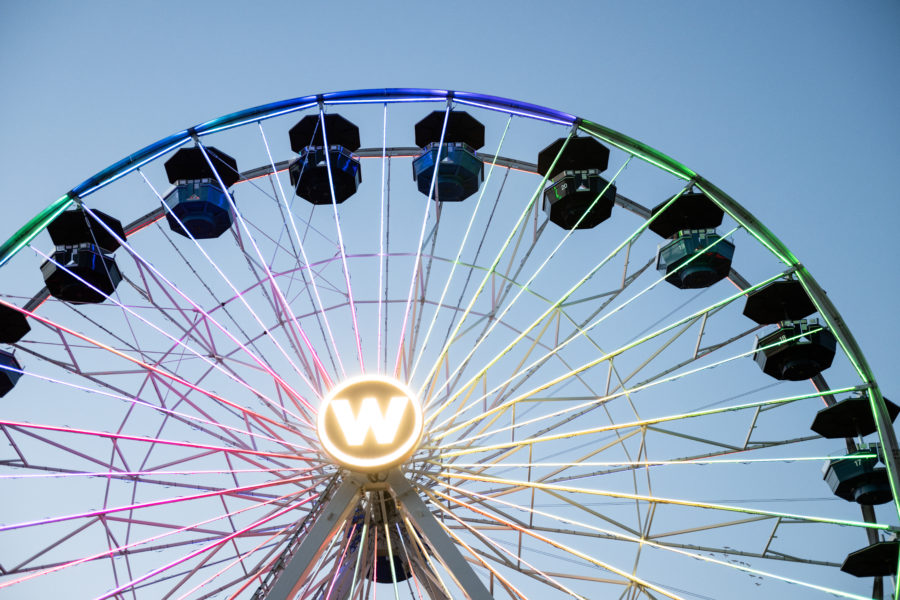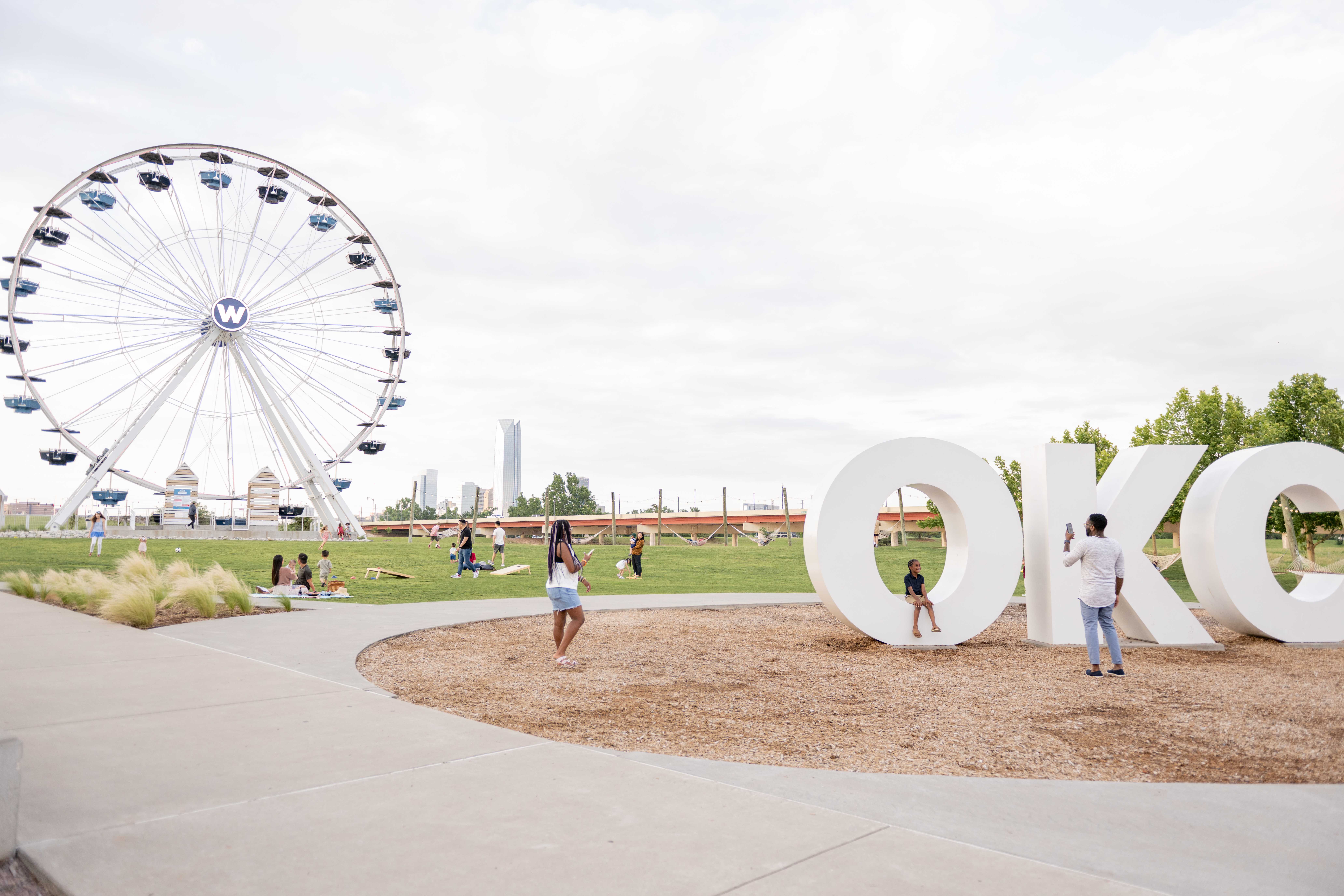The Wheeler District Ferris Wheel, first catering to park goers on the Santa Monica Pier, has recently undergone a breathtaking transformation!
A lighting redesign and installation by Stephen Tyler and Nathan Hendrix gives the beloved Wheeler Wheel a whole new look – and WOW!
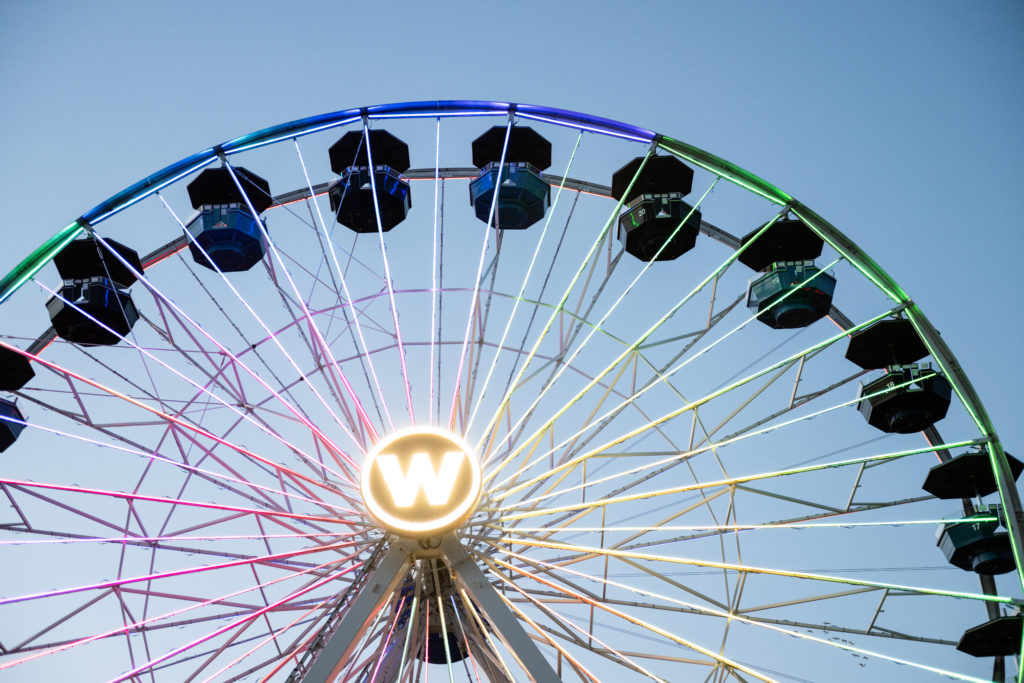
The new display required 3,000 feet of new steel cable and nearly 60,000 new LED bulbs, but now requires less than HALF the energy to power compared to the previous design!
“We’ve had numerous compliments on the new lighting display,” said Ferris Wheel Operations Manager, Arissa Hayes, “All of our guests love the versatility of the new light shows and are excited follow along as we add new shows in the future!”
The new lighting system is designed for a more user-friendly experience when it comes to customizing the display. “We are now able to change the light show with the click of a button,” said Hayes.
We sat down with lighting designer/programmer, Stephen Tyler, and lighting engineer, Nathan Hendrix, to get some insight on the completed project.
Here are the deets!
How did you become involved in the lighting redesign?
Stephen: I have been working with Wheeler District from day one – when they purchased the Wheel – programming the previous system and maintaining the project. My role for this project was system design, fabrication and programming.
Nathan: My role was more of the actual installation, such as mounting the pieces, and engineering. I also coordinated the ordering and purchasing of parts and facilitated the other contractors.
Did you run into any obstacles?
Yes. One was the current state of supply chain made everything very hard to acquire.
Not to mention, we spent a lot of time trying to find the right kind of fixture for a Ferris wheel – you know, it’s not a normal every day thing that people are shopping for. Even working with our specialty providers, we found it difficult to find a fixture that does what you need it to do and is also capable of being outside, is the right size for a Ferris wheel or can be scaled to that size.
We were also kind of stuck with working with the existing infrastructure from the previously installed system.
For example, we ended up having to replace 3000 feet of steel cable due to the attachment method of the previous display so that we could mount the new lights. We could not have foreseen that until we started taking it apart.
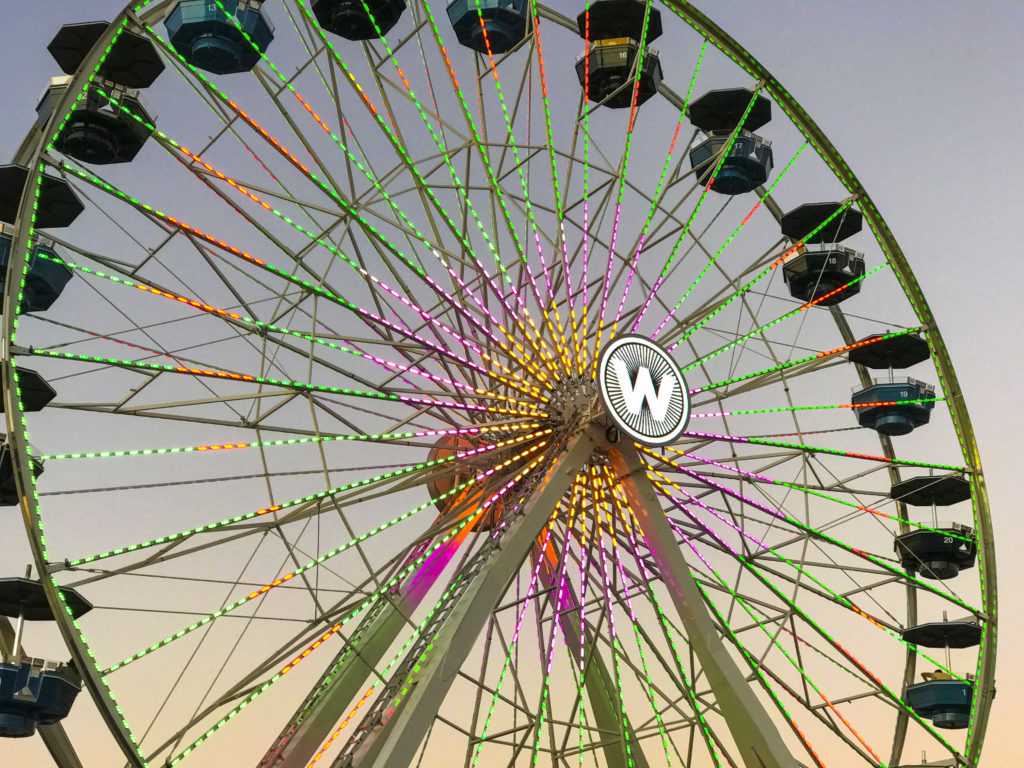
The lights were welded directly to the cables after the Wheel’s renovation. The good part of that method was that those lights were never going to come off, but that was also the bad part. We needed them to come off so we could replace them. Did that add time to the projected timeline of the project? Yeah.
We also had the weather working against us – it was really cold when we first started. We had ice and snow and freezing temperatures to worry about. When things started to warm up, we had the sun and the wind to worry about.
Did you have a vision of what you wanted to do with the Wheel’s design?
From the very beginning, we had a desire to do a lot more with the Ferris wheel. It’s such a large canvas of light with a system that was very limited on how it could be programmed, how it could be controlled and how it could be maintained.
I think the most important design element was something that relies on much more standard protocols.
The new system is completely standard. It’s using many of the same communication protocols found in standard live performance stages or theatrical stages. This opens the door to collaboration and the ability to bring in different types of control systems or lighting designers and they would have a system that could be utilized versus having one special, super limited software to work with.
This was something that the developer requested – making the system a little more modular with off-the-shelf items so that another designer/installer could step in, look at our documentation, and be able to source new parts if needed.
Beyond that, it was a desire to give a bigger ‘wow’ factor.
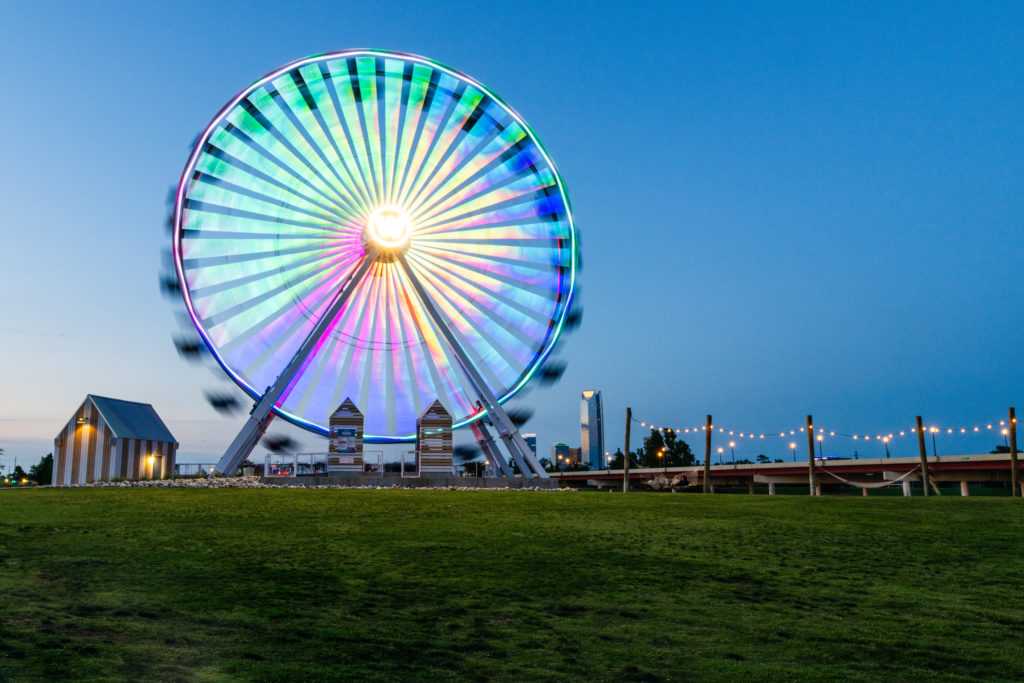
Using the term “pixels” loosely, the old system had something like 30 pixels per line where now there are somewhere around 640 pixels per line. So, with the “resolution”, the effects that are achievable now are so much more detailed, more nuanced with more color depth. Those were big players in terms of how we came up with the design.
How much power does the new lighting display require?
We actually reduced the power consumption when we upgraded the Wheel.
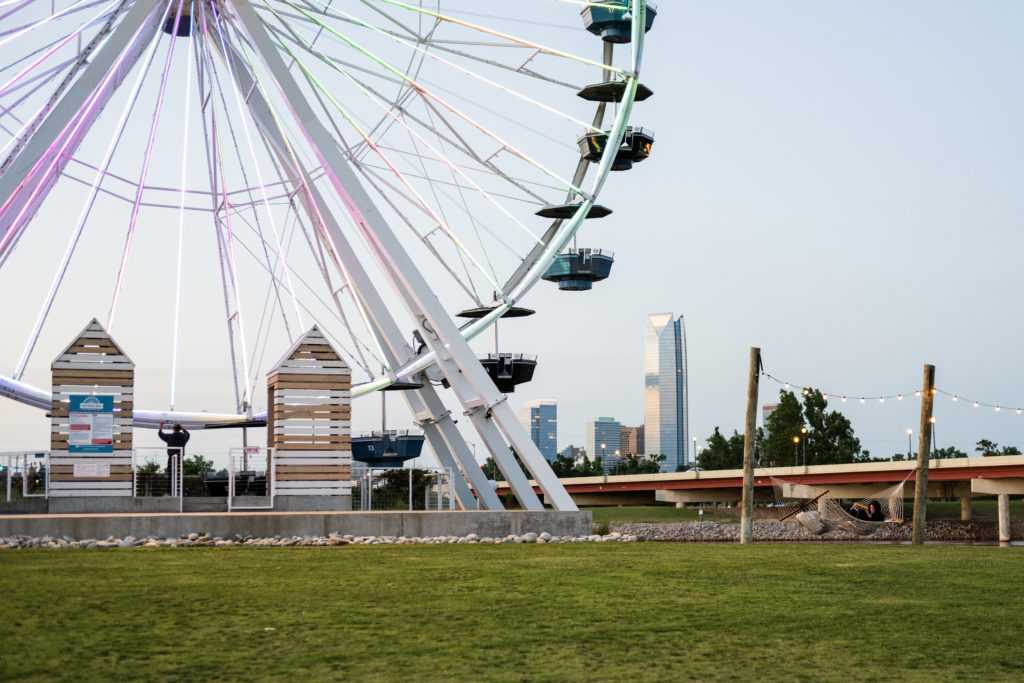
The existing system relied on approximately 240 amps of power, and we reduced it down to 80 amps. The old system was a slightly higher voltage and then we used a different voltage fixture. Even though we increased the number of pixels and enhanced the technology, everything works more efficiently.
The old system used a number of rectifiers and regulators throughout the display, creating more possible points of lighting system failure. We were able to bypass all those unnecessary tools. Now, the supplies just plug into the power and feed into the enclosures.
Using LED lighting and more advanced technology, we were also able to reduce the amount of power needed.
The future of lighting in the Wheeler District
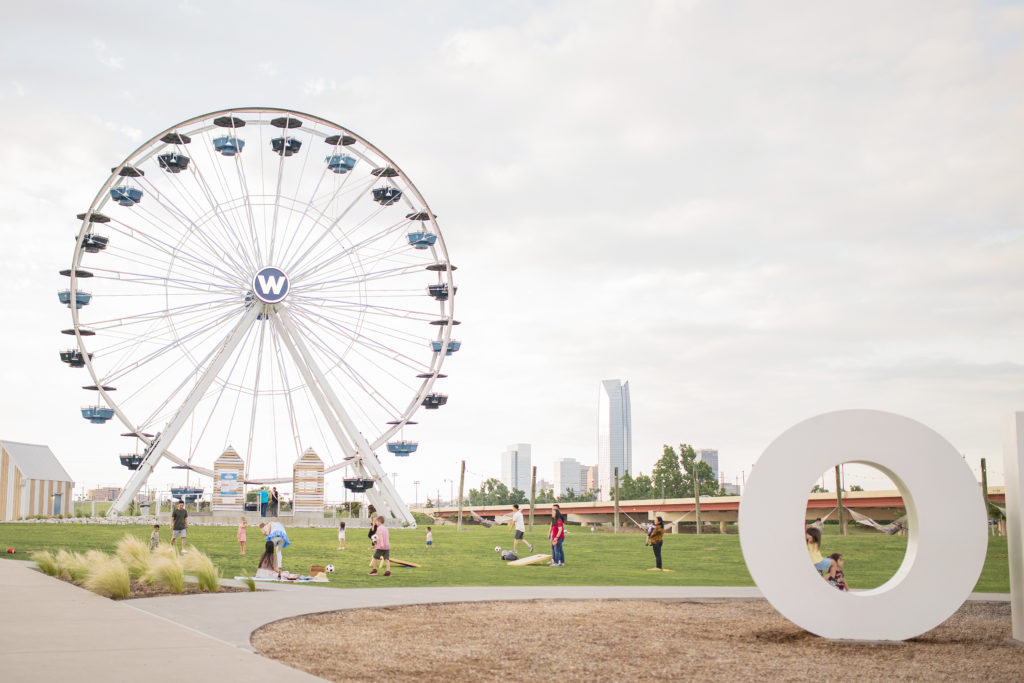
Using more standardized technology also opens the door for Wheeler District to incorporate more lighting related installations throughout the development and to have those interconnect back to the Ferris wheel.
Beyond the Ferris wheel system itself, the system is scalable almost infinitely in terms of the other parts that could be tied back into it and that will play into future designs.
